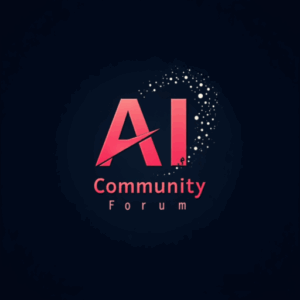The rapid rise in AI-powered development tools is changing how developers approach their day-to-day tasks. While these tools promise increased productivity, they also introduce new challenges in workflow integration, requiring both technical adjustments and cultural adaptations.
The evolution of AI assistance in development has progressed from simple auto-complete features to sophisticated agents that can manipulate files, execute terminal commands, and conduct web research. This progression calls for thoughtful integration strategies to prevent potential pitfalls for developers.
As these tools become more sophisticated, developers face a crucial question: How can they effectively incorporate these AI tools in their workflows? Moreover, they must also identify the best practices for maximising AI assistance while maintaining code quality.
In an exclusive interview with AIM, Birgitta Boeckeler, global lead for AI-assisted software delivery at Thoughtworks, shared her insights on the matter.
Finding the Right Integration Approach
According to Boeckeler, there’s no one-size-fits-all solution for integrating AI tools into development workflows. The rapidly evolving nature of generative AI means that best practices from just six months ago might already be outdated.
“It’s hard to define one correct way to do anything in software development, as the context always matters, and ‘it depends’ is a very commonly used answer to questions like this,” she explained.
“However, it’s particularly hard in the GenAI tools space right now, because it is a very fast-moving target.”
Despite this, Boeckeler suggests three emerging techniques for effective integration, particularly with agentic assistants that potentially transform traditional workflows.
To begin with, custom rules help establish baselines aligned with developer preferences and codebase conventions. Moreover, focused sessions with specific instructions yield better results than vague prompts. Finally, planning with AI to break tasks into manageable chunks improves workflow continuity.
Beyond technical setup, managing the cultural shift is equally crucial. “The use of generative AI is a significant mindset shift that shouldn’t be underestimated. Especially as software engineers, we’re not used to working with software that doesn’t behave like software, that is not deterministic,” Boeckeler noted.
She explained that organisations often place unrealistic expectations on immediate productivity gains from AI tools, creating pressure that hinders proper learning and integration. Developers need time to understand these tools’ capabilities and limitations, recognising that most AI assistants provide solutions that are 60-80% complete rather than perfect.
Preferred Tools and Implementation Approaches
Developers have three main options for AI coding assistance: IDE-based tools, terminal-based tools, and web-based interfaces. Each offers different levels of integration with existing workflows.
Boeckeler revealed that she personally prefers IDE-based tools like Cursor, Windsurf, GitHub Copilot, Cline, and Roo Code, which provide deeper integration into coding workflows. However, she acknowledged that many developers favour terminal-based options such as Claude Code, Aider, Goose, and OpenAI Codex.
When organisations introduce AI tooling, data confidentiality and security typically top the list of concerns. The vetting process usually begins with reviewing provider terms and conditions and assessing their data protection capabilities. This is followed by limited trials, during which selected developers evaluate the tool’s usefulness and identify potential risks.
“The nice thing about all these tools is that once adopted, the lock-in is quite low. You can stop using a coding assistant any time and switch to another one, without needing a big migration,” Boeckeler told AIM, highlighting the flexibility in this rapidly evolving space.
AI’s Role Beyond Coding
While coding assistance remains the primary application, AI can enhance numerous aspects of the development lifecycle. The chat functionality serves as a versatile tool for non-coding tasks like documentation writing or creating architecture decision records.
Moreover, AI integration extends to CI/CD pipelines, assisting with pull request reviews and resolving build errors. These applications demonstrate how AI can improve development efficiency beyond just writing code.
Measuring the actual impact of AI tools presents challenges similar to traditional productivity assessment. When asked about measuring AI benefits, she responded, “How are you measuring that today? The challenge of measuring engineering effectiveness stays the same; it doesn’t change because of a new tool in the toolbox.”
The impact varies significantly based on team composition, tech stack, application type, codebase quality, and organisational engineering practices. Boeckeler illustrated this with a scenario: if developers spend 40% of their time coding, AI assistants are useful in 60% of cases, and each use yields 55% improvement in speed, the overall cycle time improvement would be approximately 13%.
Organisations can optimise these gains by reducing friction that limits coding time, refactoring codebases to be more AI-friendly, improving proficiency with agentic assistants, and extending AI applications beyond coding tasks. These approaches can significantly enhance both cycle times and overall development lead times.
As the number of AI tools focused on developers continues to grow, many will experience a constant fear of missing out. Having a clear understanding of the right approach can help them navigate the evolving landscape more effectively.



